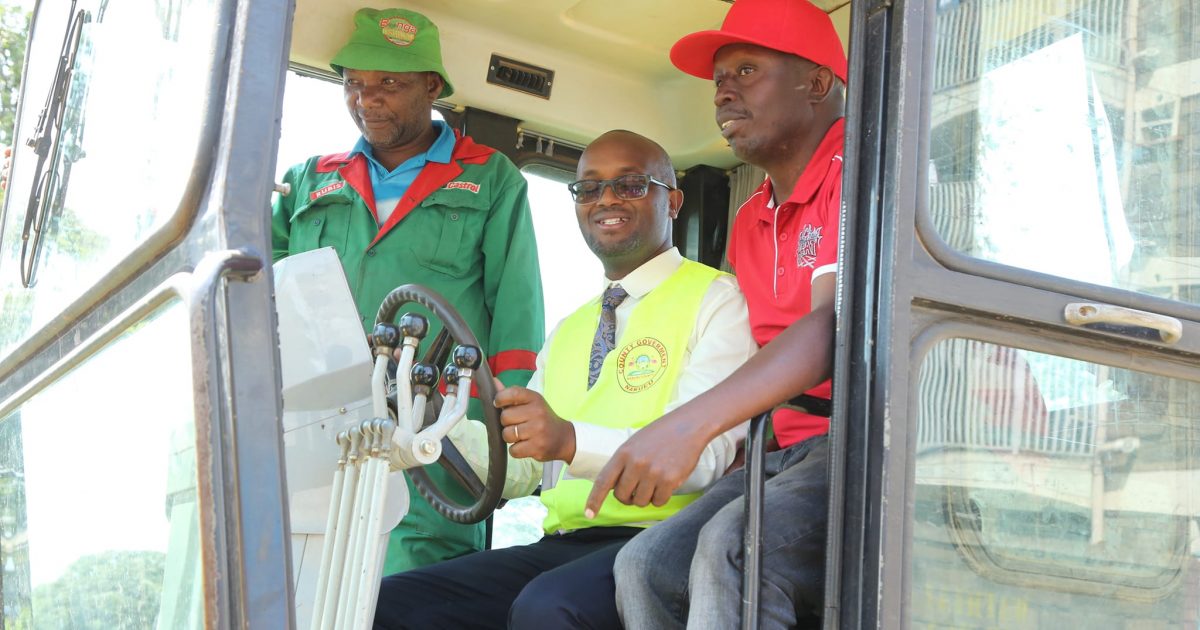Nakuru County Government has adopted a new road construction method.
The devolved unit has embarked on constructing a 450-meter road utilising the soil stabilisation method road which will serve as a demonstration of the technology’s capabilities and its potential to meet the infrastructure needs of the county.
County Executive Committee Member (CECM) of Roads, Transport and Public Works Engineer Michael Karanja said the technology was efficient and climate-resilient and will yield a road network that is a potential enabler of the long-term prosperity through facilitation of trade, improved access to jobs, education, healthcare, disaster management especially in remote areas and many other crucial services.
Through the project, spearheaded by Eco-Roads Consult Kenya, 200 meters will be developed as a trail, while the remaining 250 meters will be financed by the county government.
Engineer Karanja indicated that Governor Susan Kihika’s administration was investing in a sustainable road infrastructure capable of withstanding the test of the elements adding that this meant addressing the negative effects of intensifying climate hazards like floods, storms, drought and other extreme weather events.
“Climate change is real. In planning, designing, constructing and maintaining our road network, proper attention must be accorded to its immediate and long-term impacts. In our road designs we are comprehensively covering evolving climate risks,” he pointed out.
Engineer Karanja noted that adaptation and resilience is crucial in ensuring sustainable road infrastructure and that Kenya can avoid or at least significantly minimize the catastrophic loss of infrastructure from natural calamities by adopting a climate-smart approach.
“Soil stabilisation is a method that enhances the properties of natural soil, making it more suitable for road construction. It reduces the need for importing expensive materials like gravel and asphalt, leading to significant cost savings. The process typically involves mixing stabilizing agents, such as cement, lime, or admixtures, with the local soil. This creates a more stable, load-bearing foundation for roads, making them resilient to traffic loads and environmental factors,” explained the CECM.
Speaking during the ground breaking ceremony for the project Engineer Karanja who was flanked by Shabab Ward Member of County Assembly David Wathiai observed that traditional Road construction methods involve the extensive use of non-renewable resources such as gravel, asphalt, and concrete which he termed as resource-intensive and generate significant carbon emissions, contributing to climate change.
While noting that the constant need for maintenance and repairs for conventional tarmac roads exacerbates the environmental impact and that it was time to explore alternative approaches to mitigate these effects, the CECM said by utilising locally available soil, the method reduces the need for costly imported materials.
“Moreover, the enhanced durability of stabilised soil means fewer maintenance and repair expenses over the long term. This cost-effectiveness not only benefits government infrastructure projects but also private construction endeavors,” he added.
The Eco-Roads soil stabilization method has already proven its efficiency in other African countries, including Tanzania, Nigeria, and Ghana thus creating durable and reliable road infrastructure.
Engineer Karanja observed that traditional road construction is heavily reliant on non-renewable resources and indicated that gravel, a fundamental component in road foundations, is often obtained through extensive quarrying operations, depleting natural landscapes and habitats. He stated that the production of asphalt and concrete involves the extraction of raw materials, which not only consumes vast amounts of energy but also disrupts ecosystems.
The CECM pointed out that the entire life cycle of conventional roads, from material extraction to transportation, processing, and construction, generates significant greenhouse gas emissions which accelerate climate change, leading to adverse weather patterns, rising global temperatures, and other catastrophic environmental consequences.
Engineer Karanja stated that roads built with resource-intensive materials like asphalt and concrete require frequent maintenance and repairs and that this perpetual cycle of reconstruction further escalates the environmental impact as it involves additional resource consumption, emissions, and disruptions to surrounding ecosystems.
Engineer Karanja affirmed that roads constructed through the stabilized soil method can withstand various environmental factors, including weather, traffic loads, and erosion and that this durability ensures they last longer, reducing the need for frequent repairs and reconstructions.
“The extended lifespan of these roads means less disruption to traffic and lower maintenance costs, making them a sustainable choice for the long term. Soil stabilization also minimizes the water absorption capacity of the soil, which is beneficial in flood-prone areas. It aids in effective storm water management and helps prevent soil erosion. This feature is not only advantageous for road construction but also contributes to the mitigation of flood-related issues in surrounding areas,” the CECM pointed out.
Engineer Karanja explained that Roads built with stabilized soil offer improved load-bearing capacity and stability. This, he noted, means smoother rides for vehicles and reduced wear and tear on tires and suspensions. The enhanced performance of these roads, he added, contributes to safer and more efficient transportation networks, which are vital for economic growth and the well-being of communities.
The CECM stated that sustainable road construction should not be viewed as a concept but a practical and achievable reality that can make a significant difference in the way a nation builds and maintains our essential infrastructure.
“It’s time for the construction industry to embrace these sustainable practices and pave the way to a brighter, eco-friendly future. By adopting this method, we can pave the way to a greener, more cost-effective, and environmentally responsible future. It’s a collective effort that can drive positive change and contribute to a more sustainable world for future generations,” Engineer Karanja observed.
By Jane Ngugi





